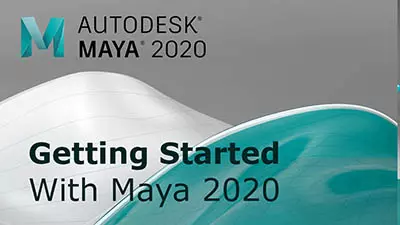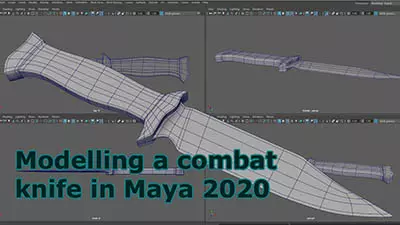Beer glass scene creation
This course contains a little bit of everything with modeling, UVing, texturing and dynamics in Maya, as well as compositing multilayered EXR's in Photoshop.
#
1
11-09-2004
, 07:28 AM
Edge Control and Facial Modeling:
The target object
I'm just wondering what the best way to model that would be. I've been doing the entire model with polys so far...and most of my work so far has been hard surfaces.
I don't understand how to draw the shapes in order to get them to smooth correctly---most of the smoothed parts on this model (all 3 of them...lol) that I've done so far have been pretty much guess & check.
Any help would be really appreciated. 8-)
Tzeentch
#
2
03-10-2004
, 08:21 AM
If I got it correctly you want to have the center big mouthed grotesque face modeled and you don't really have a decision on how to model it..
I can not really insist that I know of a BEST way, nor if a BEST way ever really exists. It's a matter of choice really. But let me just poit out a few basics that may help.
Since you have so many sharp edges I would not really go for NURB's. Though you would have to patch model this any hows you may be better off doing it with NURB's.
With Poly's you may have some issues with the cureves. And it would cost you a dear amount of poly's to be able to get this thing looking smooth. The bastard about smoothing poly's is that either you have to turn sharp edges to preserve or lower the continuity to get decent results in that. and it is also very tricky to try and extrude a face without pushing it out to get zero folds that would giv you a partial crease when you msooth it.
I would go for SubD's or Poly's for this model what so ever. Actually a SubD as it is. But I would start with a poly and convert it to a SubD. Handling the UV coordinates in the meanwhile.
If I got your question wrong and you were actually asking on HOW you can model this.. as in steps to do it. I would take me more than a simple post to teach you that. But if you have a flatbed scanner you can try a little trick that I use for texturing. It won't get you a completely ready model but a 3D object that you can take refference from.[list=1][*]if the peaces are detachable you may want to remove the canon from it's mouth (If not just be very careful) and press a flattened layer of dough or clay onto the surface of it and press gently until you get an impression. You would want to use a none stick type clay or dough . Fimo(Sculpy) would work fine if you wet the surface lightly. Actually it is really important that you have the clay evenly flat.. just use a cylinder or something and put the clay between two evenly high penciles. This will make sure that the clay is one even flat peace.[*]Carefully remove the clay; almost literally tangent to it's surface. Then lay it down on something flat.. like your desk or something.[*]The impression on the clay should be some what distorted due to the flat layout.Thats fine. And actually wanted. Now use some sort of seperator liquid (Soap, Olive oil or anything that would help prevent sticking) on the surface of the desk it is laying on and on the clay. then make a little box framework around the clay. You could use cardboard or again clay.. anything[*]Pour a layer of plaster over the impression. Making sure that you shake the desk in the process so you don't have many bubbles in the plaster.[*]Wait some while for the plaster to dry. a day would be the best.. but doesn't have to be that long. The thing is you want it to have a nice unmoist surface.[*]Paint a thin coat of modeling varnish.. prefferably colourless. Doesn't have to be very high quality but it really has to be thin. the plaster will absurb it none the less. But it is the details you want here. So a Matt modelers varnish would do perfect.[*]When this dries off; paint the whole thing with black acrylic or poster paint. or even india Ink.. something black and water deluted. My advice is for Acrylic. the paint being a thick medium would be a plus[*]With a wet rag or tissue rub off the paint so you have it black only in the pits of the model. And grey tinted to white as it inclines to peaks.[*]Scan the result in your scanner. And do a bit of retouches in a photo editing software if you have one. It is a good idea to make your image canvas a square in order to prevent any further unwanted distorions.[*]create a plane or a cube, set it's resolution to your will, and asign a shader to it. A simple Lambert would do just fine.[*]set the prepared scan image as a Displacement to this new object. And play with the tesselation as you desire. Remember the higher the value the higher the poly count. since you didn't really have a great control over the tints of the impression you may also want to tweak the gain values until you get something ressembling the face.[*]Since we had deformed the object; it's a good idea to deform the plane back to the faces original curve via deformers. Once you have done this go to modify/convert/Displacement to Polygons and convert your map to a polygon.[*]This is going to be one messy mesh you are going to have here. So you may want to just from scratch create a polygon with the polygon tool and slowly start appending to it.[*]Once you have a some what close to correct mesh convert it to a SubD and then start creasing and detailing it more to fit in.[/list=1]
Now this is NOT the BEST method, but it IS a method and I have not really seen it used on anything yet. I am preparing a series of alternative tutorials, this being one of the sort.
Don't expect the displacemeant to be perfect in the first try. You may want to experiment with the values. But none the less it is going to be a sample taken directly from the original object, so it is useful refference.
After that you have a variaty of possibilies. you may just simplify the mesh and use it.. create a plane with lots of divisions and pull it's vertices down until they match the object... make the surface live or snap to it's vertices and append a polygon...
... Or hey you can even skip the displacemeant map part and just asign the image as a texture and use it as a refference to model according to... TOTALLY your choice.
Unfortunately in such short words this is the best I can describe such a process. I hope some things were clear enough to be somewhat useful to you.
Happy modeling!
#
3
03-10-2004
, 10:17 PM
Tzeentch
Posting Rules Forum Rules
Similar Threads
Topics
Free Courses
Full Courses
VFX News
How computer animation was used 30 years ago to make a Roger Rabbit short
On 2022-07-18 14:30:13
Sneak peek at Houdini 19.5
On 2022-07-18 14:17:59
VFX Breakdown The Man Who Fell To Earth
On 2022-07-15 13:14:36
Resident Evil - Teaser Trailer
On 2022-05-13 13:52:25
New cloud modeling nodes for Bifrost
On 2022-05-02 20:24:13
MPC Showreel 2022
On 2022-04-13 16:02:13









